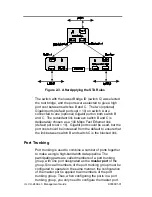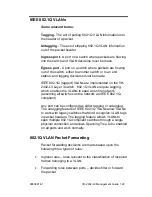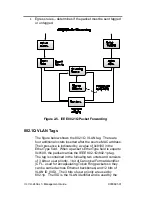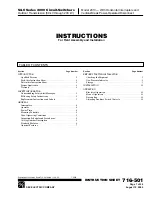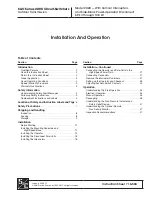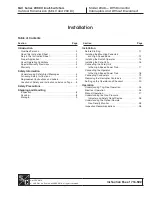
140
VH-2402-L3 Management Guide
9033691-01
11111111.00000000.00000000.00000000 255.0.0.0
Class A Subnet Mask
00001010.00000000.00000000.00000000 10.0.0.0
Network
Address
The Default subnet masks are:
•
Class A – 11111111.00000000.00000000.00000000
255.0.0.0
•
Class B – 11111111.11111111.00000000.00000000
255.255.0.0
•
Class C – 1111111.11111111.11111111.00000000
255.255.255.0
Additional bits can be added to the default subnet mask for a
given Class to further subnet a network. When a bitwise
logical AND operation is performed between the subnet
mask and the IP address, the result defines the
Subnet
Address
.
Some restrictions apply to subnet addresses. Addresses of
all “0”s and all “1”s are reserved for the local network (when
a host does not know it’s network address) and for all hosts
on the network (the broadcast address). This also applies to
subnets. A subnet address cannot be all “0”s or all “1”s. A
1-bit subnet mask is also not allowed.
Calculating the Number of Subnets and Nodes
To calculate the number of subnets and nodes, use the
formula (2
n
– 2) where n = the number of bits in either the
subnet mask or the node portion of the IP address.
Multiplying the number of subnets by the number of nodes
available per subnet gives the total number of nodes for the
entire network.
Example
00001010.00101010.01001001.11010010 10.42.73.210
Class A IP address

